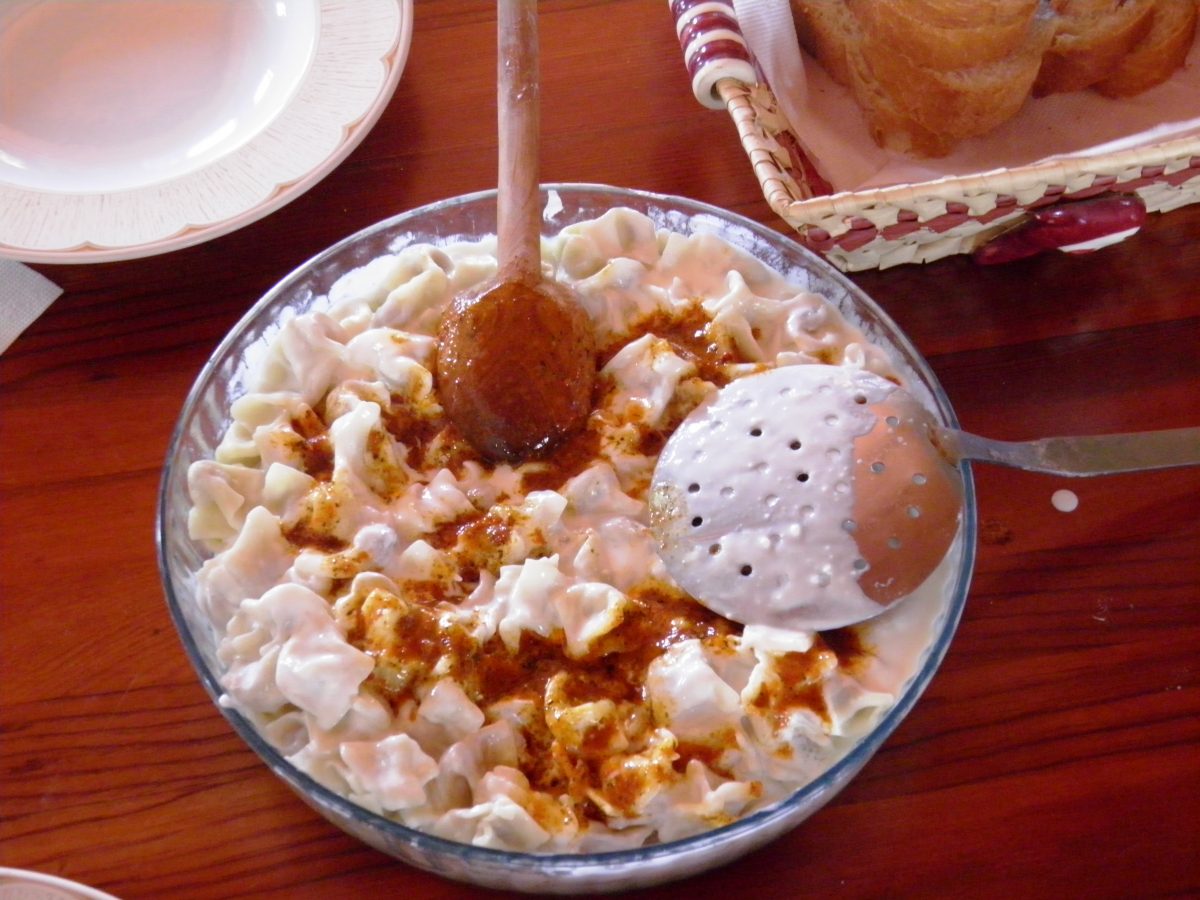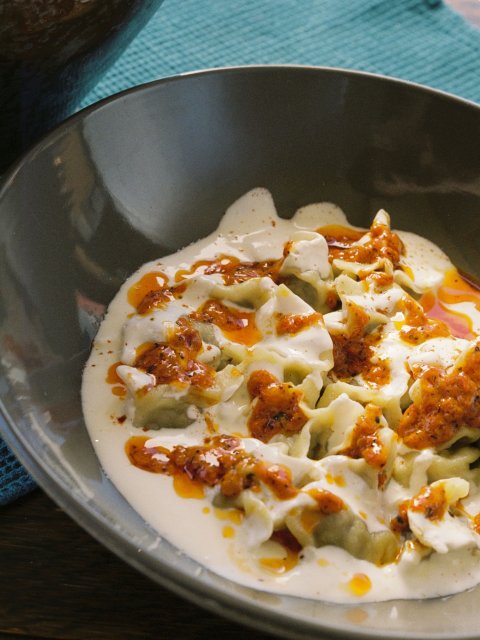Whenever we have a good length of time in a foreign country, we hire a rental car and just go where the moment takes us. We're notoriously lax at planning in advance so, using local maps, a Tom-Tom or our phones, we often head out without bookings or a plan and just trust in following our noses (or usually our stomachs!). Even when we don’t speak the language and don’t have a map in the car we still seem to do OK. But this time in Turkey we did have a destination in mind. After 4 hours of driving on back roads, skinny-dipping in the crystal-clear, very warm Aegean (we forgot our swimming costumes and there had been no other cars for 2 hours) we thought we must be lost. The road had twisted and turned around hills and through villages before becoming a dirt track, and then there was nowhere to turn around. Soon even villages disappeared but we thought we had to be going the right way because, if not, then what? We ended up in a hilltop village, population 50 (and I think that includes the 6 cows and 2 goats in the middle of the track). There was no sign of any other 2-legged inhabitants until we saw an elderly man sitting outside a mud building that might have been a house, a shop or maybe even a café? However, we didn’t know how to even pronounce the name of the only contact we had who speaks English, let alone enough Turkish to ask where we were. It was the beginning of a fabulous, unforgettable experience. Miles from anywhere we were at the mercy of whoever came by to help us find our way- in this case, some amazingly friendly villagers and a few unhelpful cows.
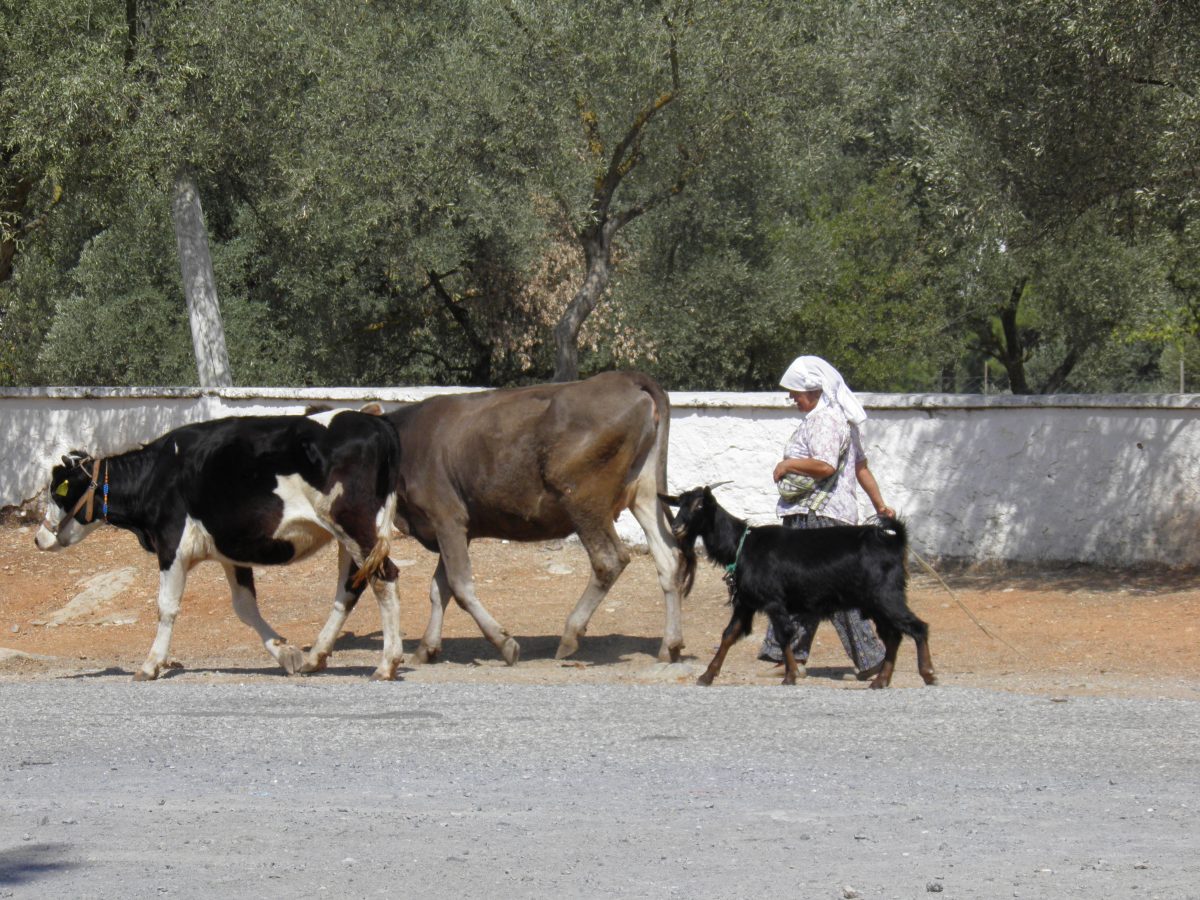
Bulent’s house in this village, in the middle of pine-covered mountains, is a traditional old house made of wood and stone. Surrounded by his organic vegetable garden and grove of trees, it is a peaceful and quiet. The only village noise we heard for four days was the mewing of cows and the occasional raucous, but mournful singing from the village drunk. According to Bulent he must have been paid for a job and spent it all on raki, the local firewater, that one night. Boy did those hills echo! The garden was very productive for such a dry area. The terrace on the roof of the house (accessed by a home-made ladder) was used to dry some of the produce, including a myriad of capsicums and chillies, as well as fresh herbs and some gourds.
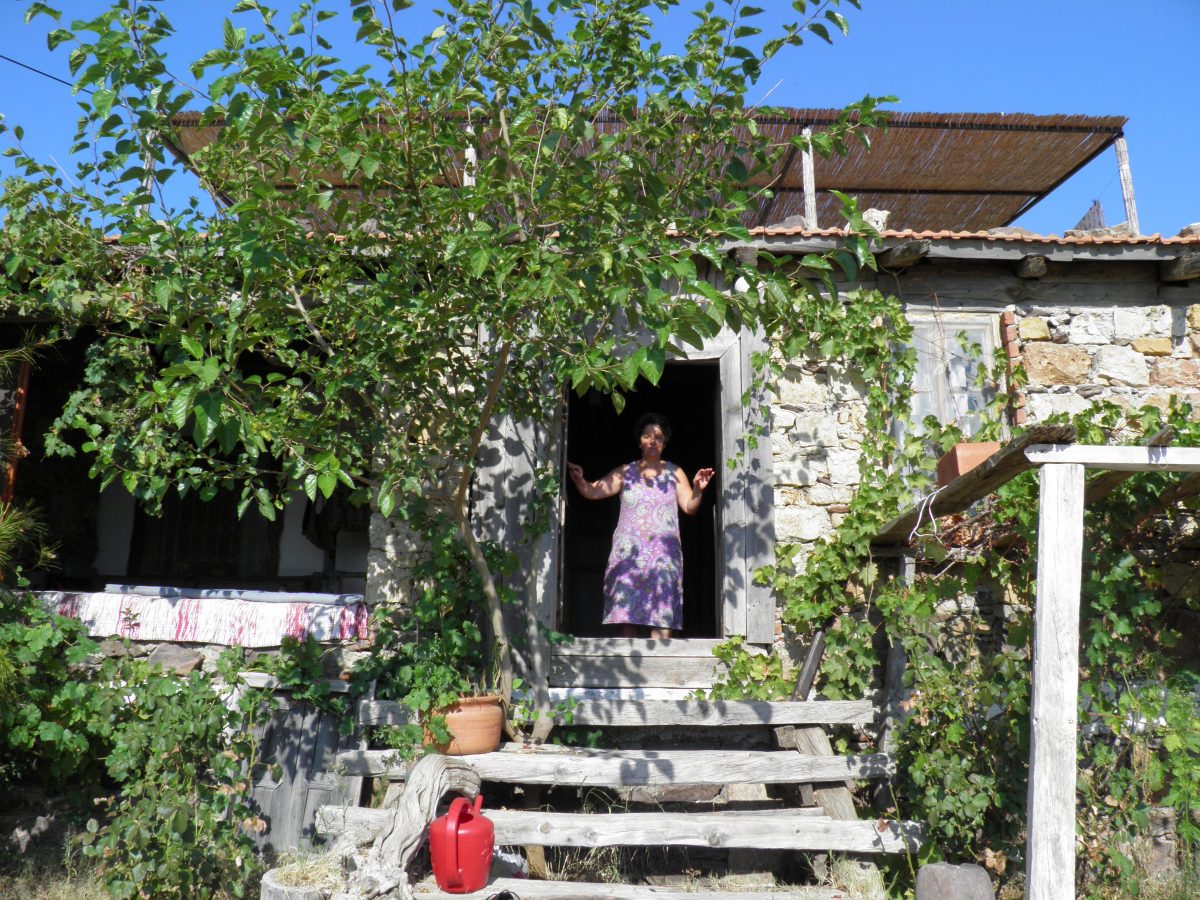
But what we came for was to learn some authentic Turkish cooking. Bulent’s mother does not speak English and Bulent is rarely there to translate. My Turkish was barely sufficient to order food and ask directions. But the language of food doesn't often need translation. Every day I woke up, walked into the kitchen to watch and help “mum” make each meal from breakfast through to dinner. This was no holiday. It was hard work making baklava or manti from scratch. No food processors, no pastry machines, just old-fashioned toil. Rolling out pastry until it is paper thin, using only a stick the width of my little finger took a lot of muscle power, and patience. Mum measured everything using the little decorative glasses we drank Turkish tea from. 5 glasses of flour, 1 egg and 4 glasses of water, is not a measurement easily adapted back home- unless you use it as the perfect excuse to buy a set of the beautiful tea glasses and saucers to take home as kitchen aids. The baklava was made from the thinnest crinkliest pastry I have ever seen. Each piece was individually rolled. The salads prepared at each meal used fresh ingredients from the garden. Simple ingredients, but superb quality. The huge tomatoes were diced and topped with sliced red onion, masses of chopped parsley and dressed with salt, lemon juice and a good glug of local olive oil. A sprinkle of the ubiquitous Turkish dried mint and chilli flakes on top made absolute perfection!

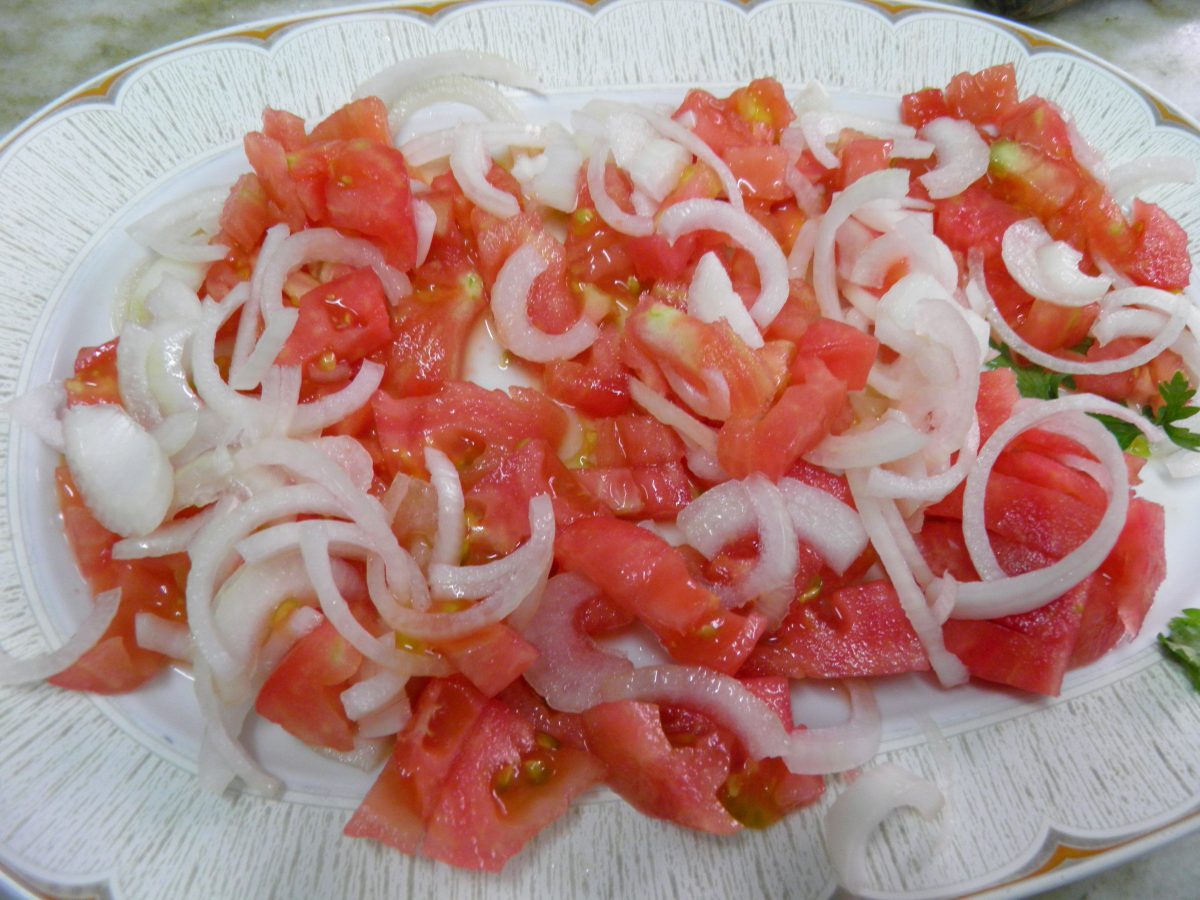
Three days of learning how to make koftes and chicken sis, pilafs and macaroni, boreks and kabak dishes, salads and eggplant dishes all washed down with endless cups of Turkish coffee and tea and accompanied by Bulent’s melodies on the mandolin or drums. He makes his own instruments and has quite a variety of them hanging up on the wall. He was as equally passionate about his music as he was his garden. But his true passion showed at night when we would sit down after dinner and discuss the political situation in Turkey. He was adamant that the new President was not going to be good for Turkey as he was too conservative. Although Muslim, Turkey is quite a secular society, and the government of the modern Turkey has always run the country separately to its religion- until now. Bulent was preparing for the worst, and had his yurts all ready to take to the hills to live, away from what he was sure would be the chaos of an interfering government. Although I don't know how he would have coped without his mum's cooking living in his yurts by himself.
It was sad to finally wave goodbye and weave our way back down the dirt track out of the mountains to the coast again. At least this time we knew where we were going and could just soak up the scenery as we reminisced about the mountains of food we had made and eaten, the interesting political discussions we had had, and the hand-scrawled recipes with dubious measurements in the hand-crafted woven journal that we would definitely use when we got home.
One of my favourite dishes that we created was manti. The first time I had these in Turkey was a few years earlier when my husband was working for a week on a little peninsula on the West coast of Turkey near Gebze. This little peninsula (Bayramoglu) is usually busy with Turkish holiday makers staying in their holiday homes over summer, but while we were there it was pretty deserted. On my daily walk I was accompanied by a pack of stray dogs (following me in the hope of food) and I very rarely saw people. Even at the solitary restaurant that was open there were, at most, another 2 customers. On the first day, I sat on the veranda there eating manti. It was so good, I went back every day afterward to repeat the experience (sure, it WAS the only place open, but the manti were great!). Manti are pillow-like, lamb-filled mini ravioli swimming in a garlicy yoghurt sauce that is topped with a chilli-spiked mint butter. I was so thrilled to learn how to make them myself from ‘Mum”. Although they are a little fiddly to make, they are so fantastic and worth doing at least once in your life. Though I dare you to stop there.
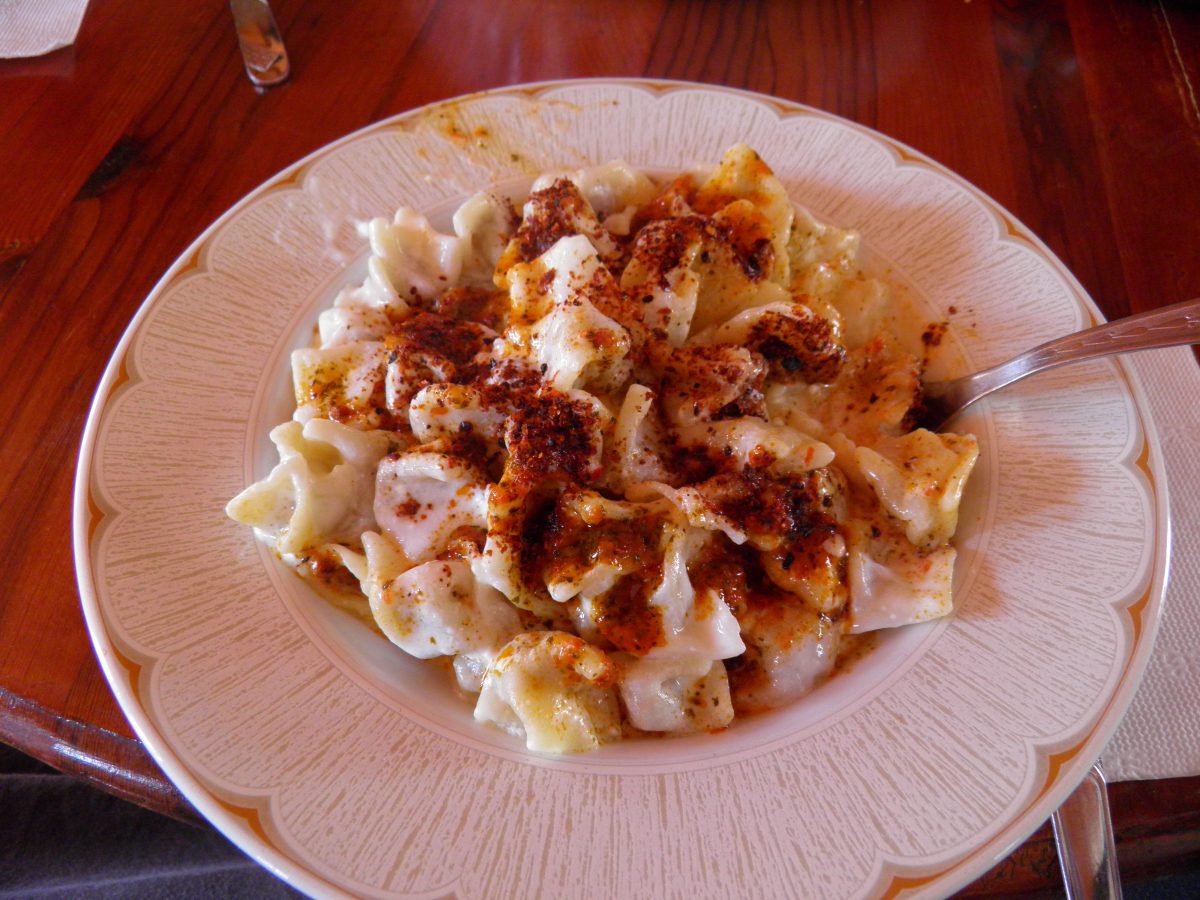
Yufka Dough
4 Turkish glasses (1 cup) plain flour
1 teaspoon salt
1 egg, lightly beaten
Manti
200g minced lamb
1 medium onion, grated
Salt & pepper
1 garlic clove, crushed
Sauces
500g thick natural yoghurt
6 cloves garlic, crushed
2 tablespoons butter
2 tablespoons biber
1 teaspoon dried mint
2 teaspoons paprika
To make the dough, mix the flour and salt on your work surface and make a well in the centre. Mix in the egg with your hands and slowly add some cold water, mixing all the time. 1 Turkish glass of water should be enough (about⅓ cup). Combine them to form a stiff dough. Roll and knead it a little, pushing quite hard down onto the dough with your knuckles, then rolling it up and repeating. Leave it to stand for 15 minutes.
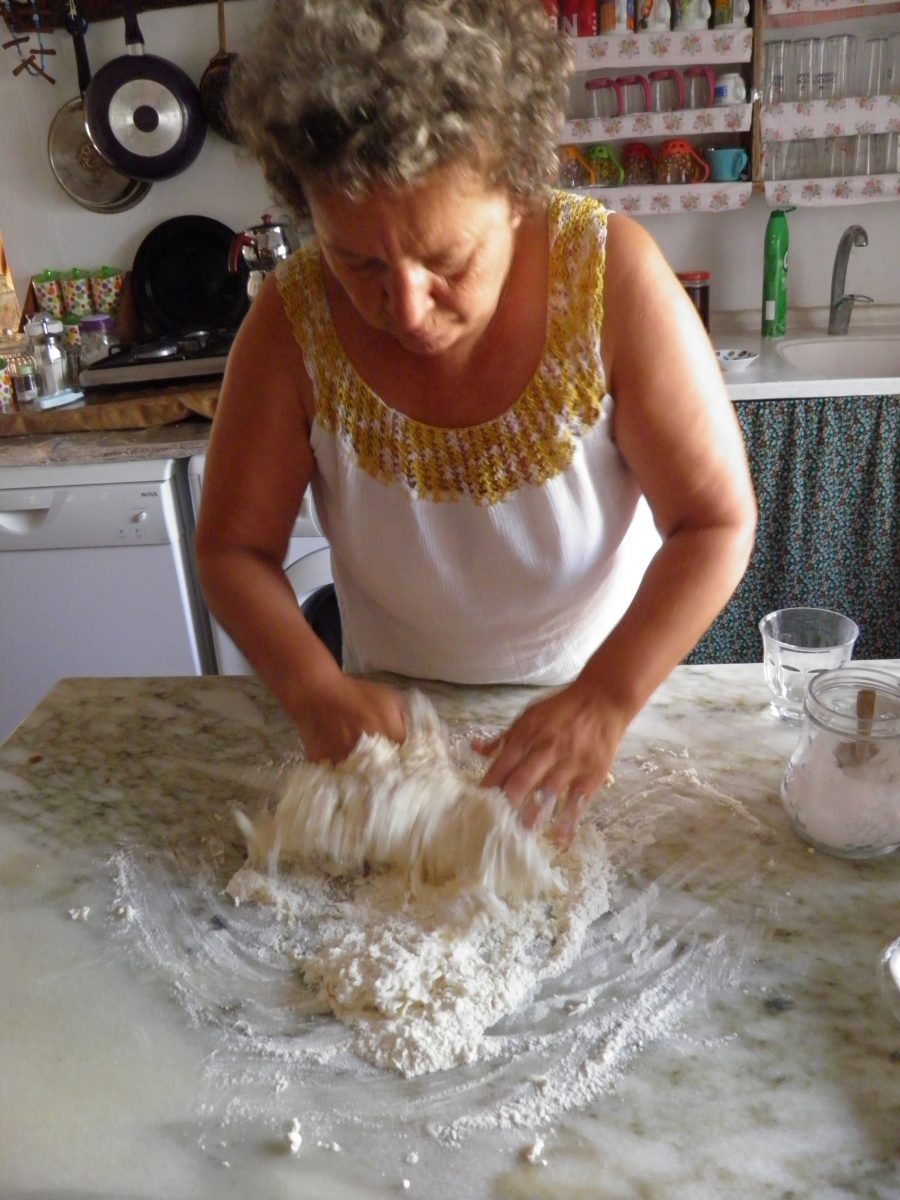
To make the filling combine the mince, onion and garlic in a bowl and season with lots of salt and black pepper. Mix until well combined.
Mix the yoghurt, quarter cup of water and crushed garlic, season with salt and leave aside to infuse
Divide the dough into 4 even-sized pieces. While you work with one piece, cover the other three with a damp tea towel to stop them drying out. Line two trays with baking paper. Roll out one portion of the dough on a floured surface until it is paper-thin. Cut the very thin dough into 4cm squares. Take just ½ teaspoon of the filling at a time and put it in the centre of a square.
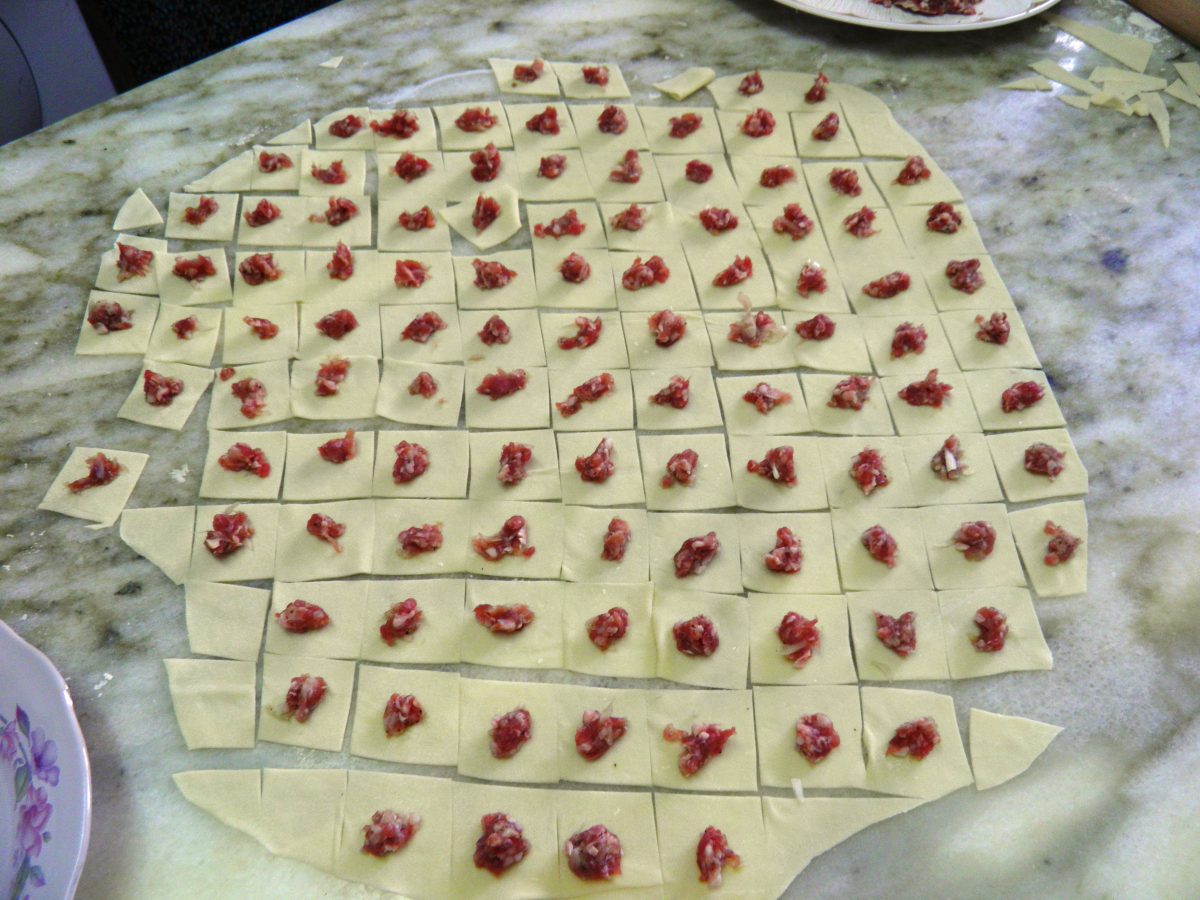
Lift up the 4 corners of the square and join them in the middle on top. Press tightly to seal the parcel with a seam running down each side. Place on a tray and cover it. Repeat with all of the remaining dough until the filling is used up.
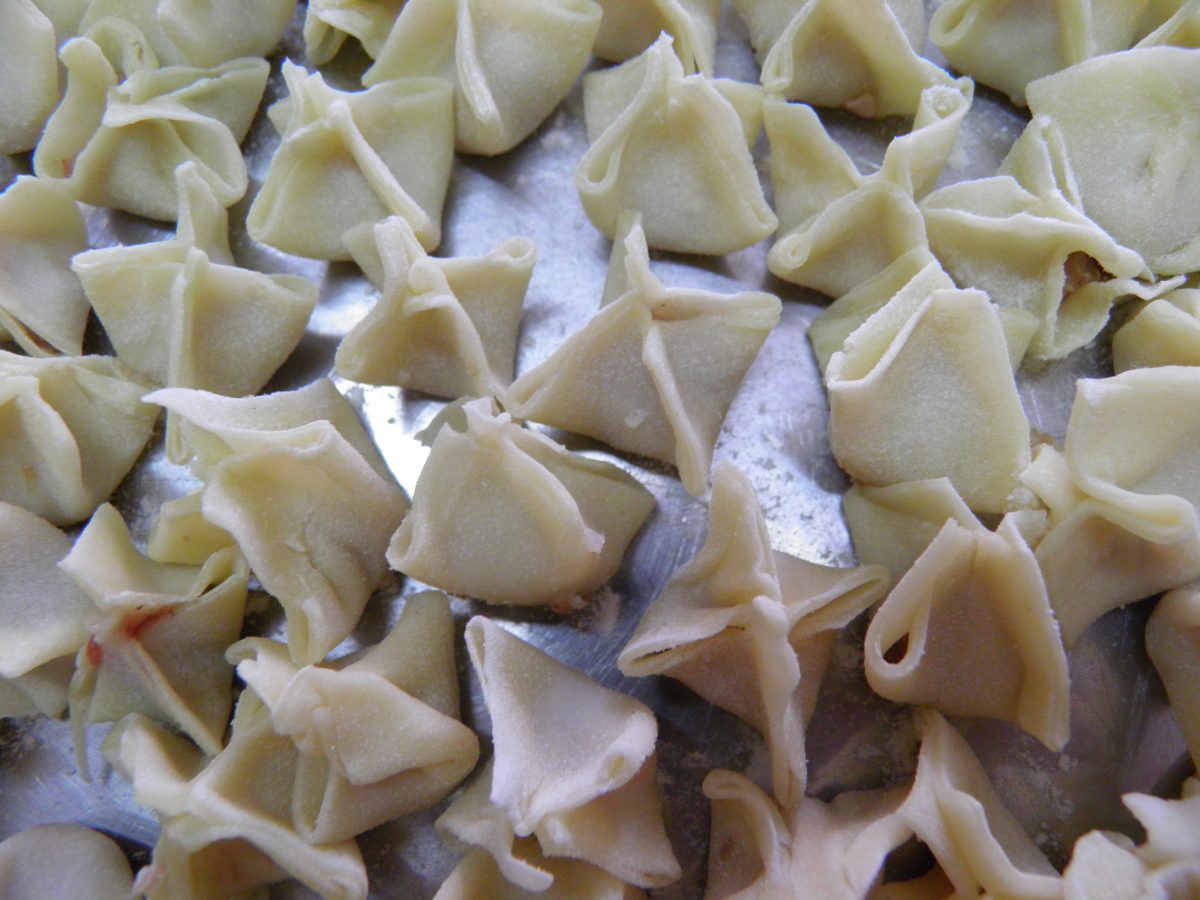
Bring a large pot of water to a rolling boil. Meanwhile heat the butter in a fry pan and add the biber paste. Stir a little and add the dried mint. When the water boils add a teaspoon of salt and then put the manti into the pot. You can add them all and cram the pot full. Take about 3 tablespoons of the boiling water out of the pot and pour it into the sauce. Stir it in well. When the water comes to the boil again take out 3 ladles-full of water and add to the sauce to get a runny consistency. The manti are cooked when they rise to the surface (about 8-10 minutes).
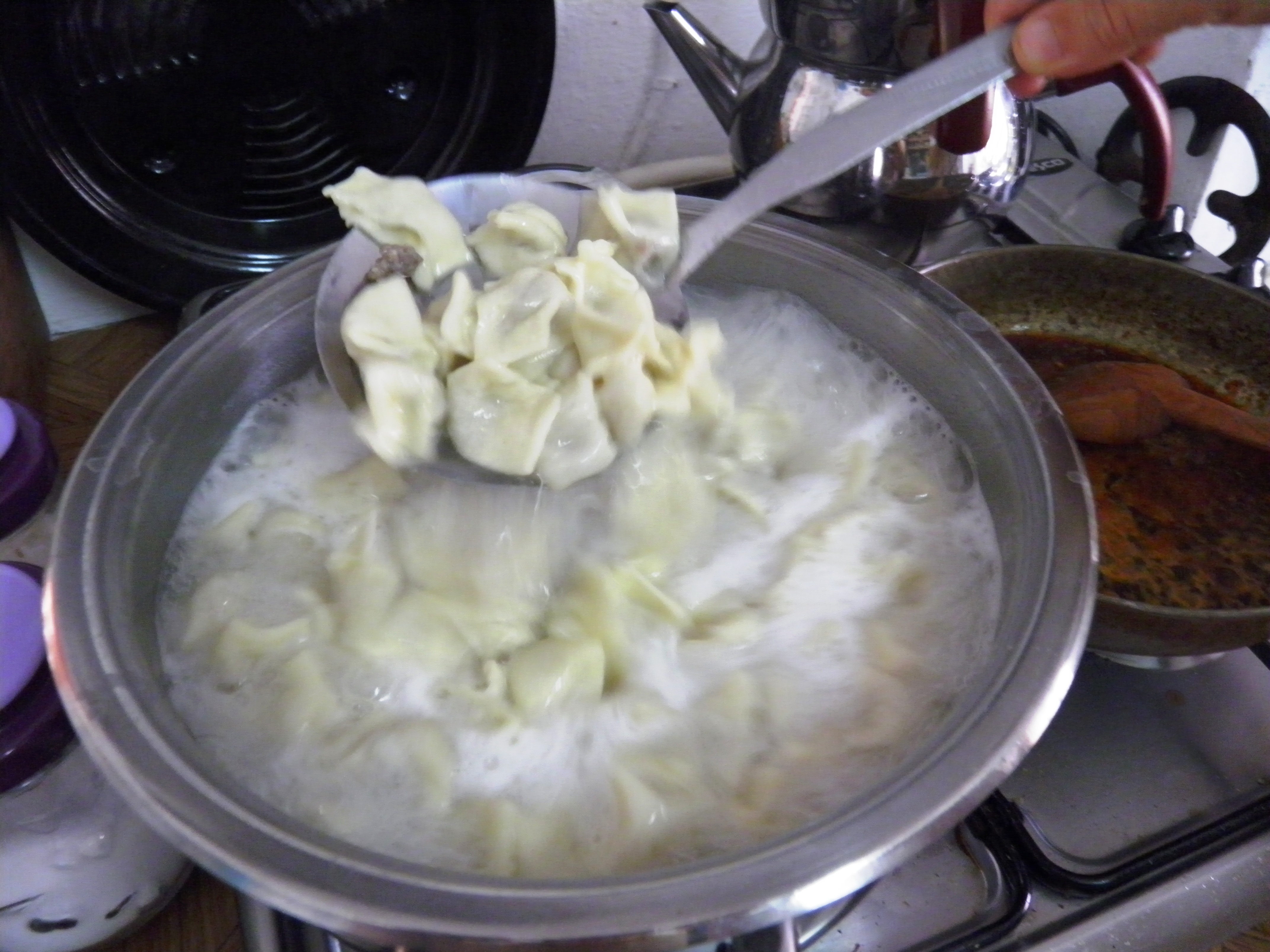
Drain well and divide among the serving bowls. Top with some of the yogurt so that it ‘sauces’ the manti -you may need to gently stir them together. Spoon over some of the red sauce and put the rest on the table for people to add to their plates as they please. Garnish with a few chilli flakes on top
